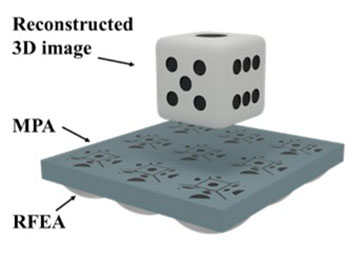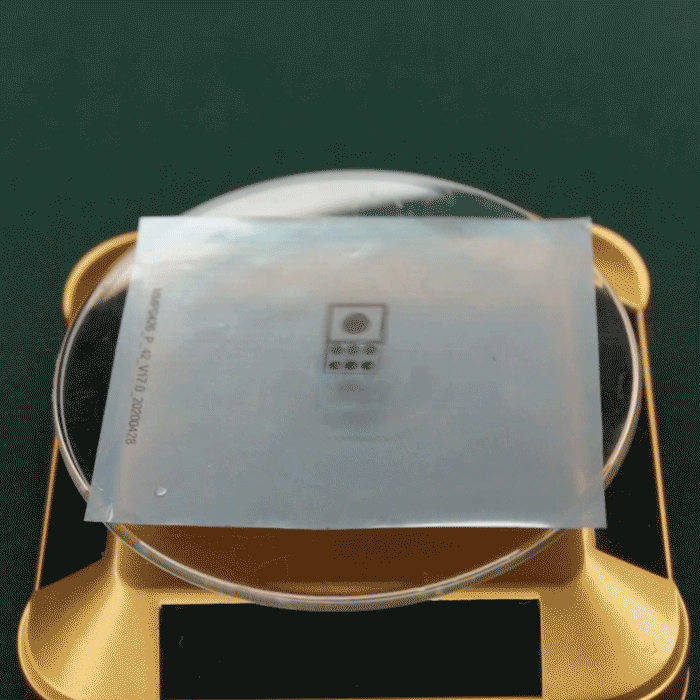
Schematic of the ultrathin, reflective light-field imaging film. [Image: S. Shen, Soochow University, China]
A research team from Soochow University, China, has employed a new fabrication method and algorithm to create an ultrathin film that can project detailed 3D images (Opt. Lett., doi: 10.1364/OL.463117). The micro-patterned film captures the direction and intensity of light in a defined field, resulting in bright images that are clearly visible from all viewing angles.
The ultrathin film “can be easily laminated to any surface as a tag or sticker or integrated into a transparent substrate, making it suitable for use as a security feature on banknotes or identity cards,” said team lead Su Shen in a press release.
A novel approach to light-field imaging
Previous techniques for creating 3D projections via light-field imaging have suffered from constricted viewing angles or low light efficiency. In an effort to overcome these limitations, Shen’s team developed a novel approach with an ultrathin reflective film, a low-cost fabrication method and an algorithm for processing light-field data into bright 3D images with a large field of view.
The reflective imaging film is only 25 µm thick and is dual-sided. The top of the film features a micropattern array (MPA) that encodes the 3D image and a reflective focusing element array (RFEA) on the bottom that acts as a collection of tiny cameras that captures all light intensity and direction data within a defined space.
To create the film, the researchers employed a new fabrication technique that allows for a compact, ultrathin architecture using low-cost materials. Unlike traditional nanoprinting lithography (NIL), the team’s self-releasing UV-curable NIL technique requires both sides of the imaging film to be surface-treated with UV radiation and joined with a UV-curable resin. At the end of the UV-curing process, the polydimethylsiloxane molds for the MPA and RFEA automatically peel off and a reflective layer of chrome is deposited into the MPA dimples.
The researchers developed an algorithm to record dense light-field data from the RFEA layer and reconstruct via the MPA-layer occlusion-relation a visually sharp 3D picture of items in the light field that appears to float above the film.
Dice floating in space

Researchers developed an ultrathin film that can create a detailed 3D image viewable under normal illumination without any special reading devices. They demonstrated the new film by using it to create a 3D image of a cubic die that can be viewed from 360 degrees. [Image: S. Shen, Soochow University in China]
After a successful computer simulation of the light-field imaging technique, the Soochow University colleagues moved on to a laboratory demonstration. Using their ultrathin imaging film and algorithm, they reconstructed a 3D image of a cubic die measuring 8 mm × 8 mm with a depth range from 0.1 to 8.0 mm viewable under natural lighting conditions and at a wide field of view.
With further development, the researchers say their light-field imaging technique could be used as a visual security feature or in virtual/augmented reality devices.
They also believe the fabrication technique could be used to create nanopatterns on materials other than ultrathin imaging films—for example, on transparent displays. To that end, the team hopes to commercialize the fabrication process by creating a double-sided nanoimprinting machine for achieving the precise alignment required between the micropatterns on each side of the imaging substrate.
